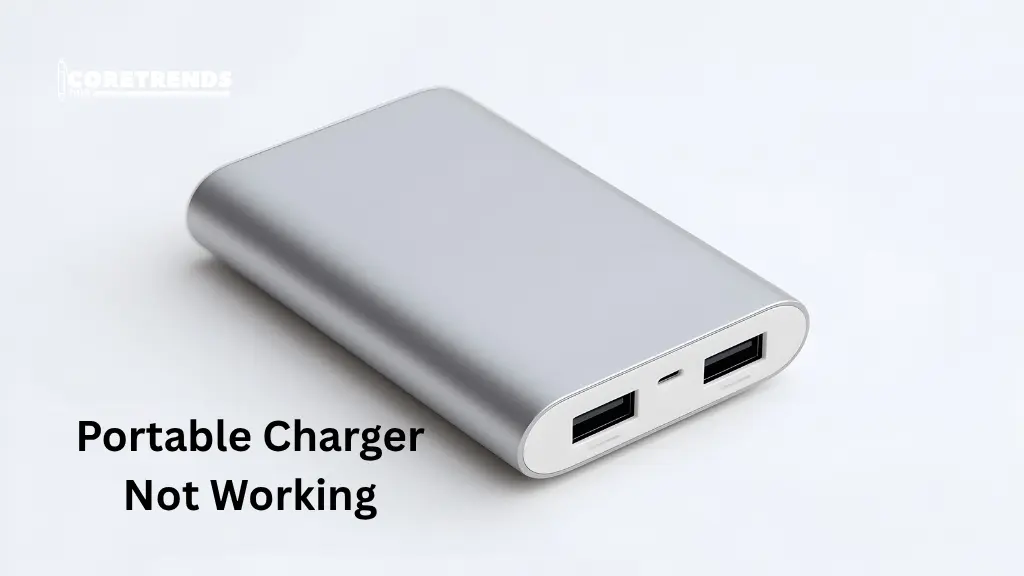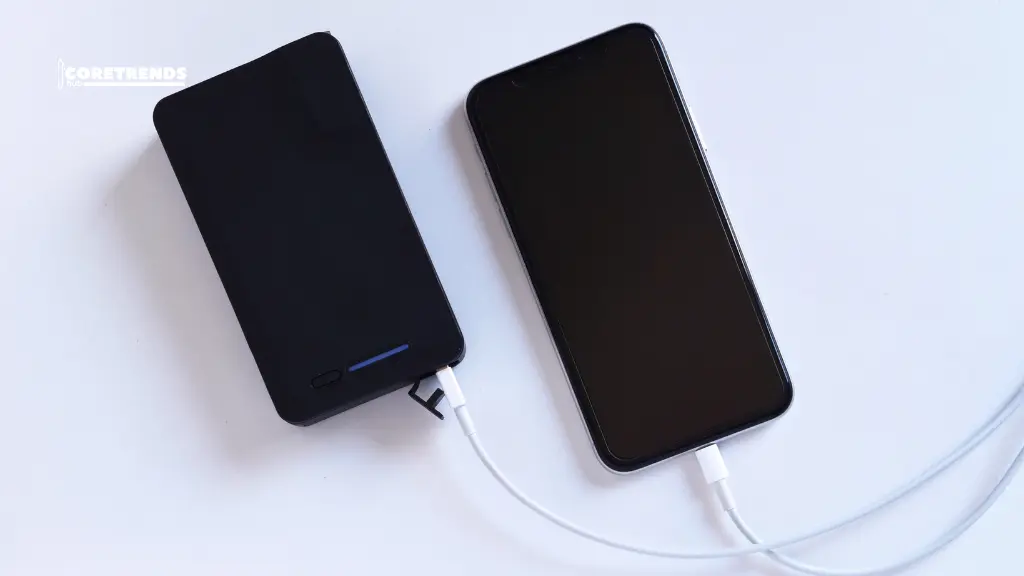Portable chargers are important in today’s life. Phones, tablets, and other devices run out of battery quickly because we use them all the time. A portable charger gives power on the go. You don’t have to look for a wall socket when you are outside. It makes travel, work, and daily tasks easier. Many people keep one with them for safety, so they never lose connection.
Still, problems can happen while using them. Sometimes the charger doesn’t hold power. At other times, the cable or port stops working. Overheating is also a common issue. In some cases, the battery inside wears out and reduces charging ability. These problems cause frustration, especially when you need the charger most. Knowing these issues helps you take better care of your device.
Table of Contents
How a Portable Charger Works
A portable charger works as a backup battery that stores energy for later use. Inside, it has a rechargeable lithium-ion or lithium-polymer battery. You charge it by connecting it to a wall socket, laptop, or other power source. Once it is full, the stored power stays inside until you need it. This makes it useful when your phone or tablet battery runs out during travel, work, or emergencies.
When you connect your device with a USB cable, the stored energy starts moving from the charger into your device. This flow is managed by circuits inside the charger. These circuits make sure your device gets the right amount of power. They also prevent issues like overcharging or overheating. Without these safety features, your device battery could get damaged.
Most portable chargers come with LED lights that show how much power is left. Some models even have multiple ports to charge more than one device at the same time. The lights help you know when it is time to recharge the power bank. This makes managing your charging needs easier and stress-free.
Common Reasons a Portable Charger Stops Working
Battery Depletion
Every portable charger has a limited battery life. After hundreds of charging cycles, the internal battery begins to wear out. It may still show charging lights, but the power stored is not enough to charge your phone. This is a natural process with lithium batteries, and once the battery weakens, the charger becomes less useful.
Faulty Cables and Adapters
A portable charger depends on good cables and adapters to work. If the cable is frayed, bent, or of poor quality, it won’t transfer power properly. Similarly, a damaged adapter might not give enough power to recharge the power bank fully. These small issues can make it seem like the charger is broken when it’s actually the accessories causing the problem.
Damaged USB Ports
The USB ports on a portable charger are used constantly, and they can get worn out. Dust, dirt, or even moisture can block the connection between the charger and your device. If the port becomes loose or bent, the cable won’t fit tightly. This often leads to slow charging or no charging at all, even when the charger has power.
Overheating Issues
Heat is a common enemy of electronics, and portable chargers are no exception. Leaving the charger in direct sunlight, using it while it charges, or powering multiple devices at once can cause overheating. This extra heat can damage the battery and reduce its life span. In some cases, the charger may shut down completely to prevent further harm.
Internal Circuit Failure
Inside every portable charger is a safety circuit that controls power flow. It protects against overcharging, short circuits, and too much current. If this circuit becomes damaged, the charger cannot regulate power. This usually means the power bank will stop working altogether. Once the internal components fail, replacement is often the only option.
Signs That Your Portable Charger Is Failing
Slow or No Charging
One of the first signs of a failing portable charger is slow charging. Your device may take much longer to charge than usual, or it may not charge at all. Even when the charger shows it has power, it fails to transfer enough energy to your phone or tablet. This often means the internal battery is weakening.
Lights Not Turning On
Most power banks have LED lights to indicate charge levels. If these lights stop working or behave oddly, it can signal trouble. Sometimes the lights blink but the charger doesn’t actually hold power. In other cases, they don’t turn on at all, showing that the battery or internal circuits may be damaged.
Overheating During Use
A charger that gets too hot is a clear warning sign. Overheating can happen if the battery is damaged or if the internal components are failing. It may feel unusually warm even when charging a single device. If ignored, this issue can lead to permanent failure or even safety risks.
Short Battery Life
Another common sign is when the charger loses power very quickly. Even after a full charge, it may only be able to charge your phone once or less. This shows that the battery capacity has dropped. Over time, the charger becomes less reliable and may need replacement.
Troubleshooting Steps to Fix the Issue
Check the Power Source
Before blaming your charger, make sure the wall socket, USB port, or adapter you are using works properly. Sometimes the issue is not the charger but the power source. Try plugging another device into the same outlet to see if it charges.
Inspect the Charging Cable and Ports
A damaged cable or dirty USB port can prevent proper charging. Check the cable for frays, bends, or loose connectors. Also, examine the charger’s USB ports and your device’s port for dust or debris. Cleaning gently with a soft brush can sometimes solve the problem.
Reset or Restart the Charger
Some portable chargers have a reset button, or you can unplug and reconnect them to restart the system. This can help if the charger’s internal circuit has temporarily stopped working. Follow the manufacturer’s instructions for a proper reset.
Try a Different Device Connection
Sometimes the problem is with your device, not the charger. Try charging another phone or tablet with the same charger to see if it works. This helps identify whether the issue lies with the charger, cable, or device.
Avoid Overuse During Charging
Using the charger while it charges multiple devices at once can cause overheating or reduce performance. Let the charger rest and avoid simultaneous heavy use to see if it restores normal function.
When to Replace Your Portable Charger
A portable charger should be replaced when it no longer works reliably. One clear sign is if it fails to hold a charge. Even after several attempts to recharge it, the power bank may only charge your device once or not at all. This usually means the internal battery has permanently degraded, and continuing to use it can be frustrating.
Safety is another important reason to replace a charger. If it overheats during normal use, shows damage in the ports, or has a swollen casing, it can be dangerous. Overheating can harm your devices or, in worst cases, cause fire hazards. Using a damaged charger is risky, so replacing it immediately is the safest choice.
Charging efficiency also matters. A failing charger may take much longer to power your devices or deliver inconsistent energy. If cleaning the ports, checking cables, and trying different devices does not help, the problem is likely internal. At this point, replacement is the best solution to ensure reliable charging.
Conclusion
Portable chargers are very useful, but they can stop working for many reasons. Common issues include battery wear, faulty cables, damaged ports, overheating, or internal failures. Paying attention to signs like slow charging, lights not working, or overheating can help you know when the charger is failing.
You can try troubleshooting steps like checking the power source, inspecting cables and ports, resetting the charger, or testing with another device. If problems continue or the charger is old, replacing it is the safest option. Proper care and timely replacement keep your devices charged and ready when you need them.



